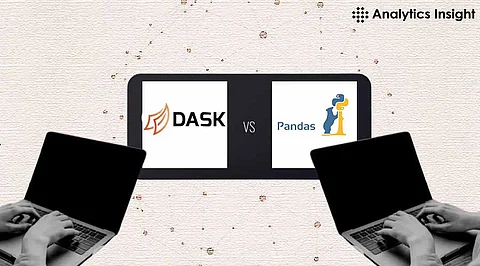

Data scientists and analysts rely heavily on Python libraries to extract insights from complex data sets. Pandas and Dask are two popular choices, but they cater to different use cases and requirements. In this article, we'll delve into the strengths and weaknesses of each library, empowering you to choose the best fit for your data analysis needs.
Pandas is Python's best public library for manipulating and analyzing data. It works best with small—to medium-sized datasets that fit into memory.
1. Ease of Use: The other area of strength is user-friendliness. The user interface is intuitive, and DataFrames is powerful, thus fitting in well with operations even for novice users.
2. Comprehensive Functionality: Pandas well caters to cleaning and other processing tasks, offering an enormous selection of functionality for completing many varied activities.
3. Integration: The entire library is integrated with popular Python tools for scientific computation, such as NumPy, Matplotlib, and Scikit-learn.
4. Community Support: With extensive documentation and a large user community, finding solutions to problems is relatively easy.
1. Memory Constraints: Pandas operates in memory, so it will not work with datasets bigger than the RAM.
2. Slow speed: Handling large datasets can lead to slow performance and even crashes.
Dask is usually used for datasets that are too big to fit into memory, such as distributed computing. It is a parallel, flexible computing library that scales the use of Python tools like Pandas.
1. Scalability: In addition to fitting into memory, Dask slices the datasets into smaller pieces and executes those processes in parallel.
2. Familiar Interface: Dask provides a very similar API to Pandas, making it easy for users to switch from one to another.
3. Distributed Computing: Dask can be used with clusters,, which allows for the analysis of huge datasets.
4. Performance: It optimizes computations by lazily evaluating operations, only computing results when needed.
1. Complexity: While Pandas' API appears simple, optimizing and debugging Dask calculations can be relatively more intricate.
2. Overhead: Since small datasets become slow through Dask, it is faster when used through Pandas.
3. Limited Features: Some advanced operations rendered by Pandas cannot be performed by Dask.
For Small Datasets: Pandas is faster and easier to use if the dataset fits into memory.
For Prototyping and Exploration: Pandas is a great tool for quickly diving into data because of its impressive capabilities and user-friendly design.
Static Data: Pandas is sufficient for use cases where data size and structure don’t change frequently.
For Larger Datasets: Dask should be preferred if your data exceeds memory limits or requires distributed computing.
Performance Optimization: Dask is excellent for speed improvements when computations over large datasets need to be parallelized.
Dynamic Data: When data and updates are constantly consumed within a workflow, Dask's scalability becomes important.
The choice between Pandas and Dask depends on the size of your dataset and the complexity of your computation. For small- to medium-sized datasets, Pandas remains the go-to library, offering simplicity and speed. However, when working with larger datasets that exceed memory limits or require distributed computing, Dask is a powerful alternative.
Understanding your project’s requirements is key to leveraging these libraries effectively. Pandas and Dask each have unique strengths, and in some workflows, they can even complement each other, offering the best of both worlds.
